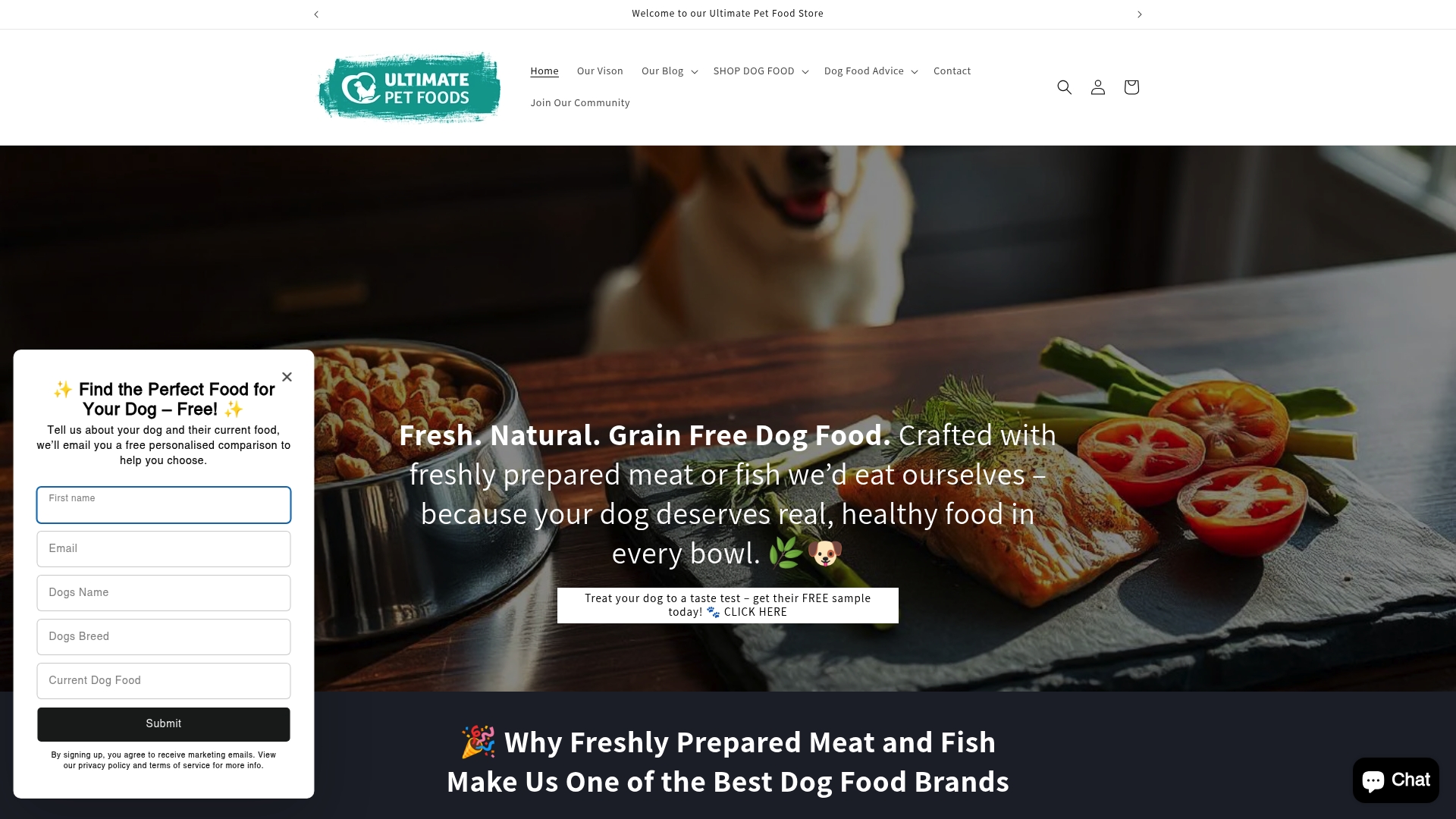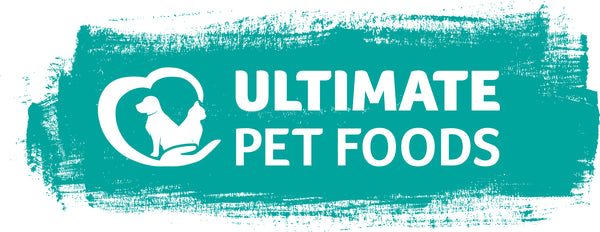
Understanding Dog Foods to Avoid for Optimal Health
Share
Dog food labels are packed with promises about nutrition and flavor. Most owners pick a bag off the shelf and trust that whatever is inside will keep their pet healthy. Yet, ingredients like BHA and BHT—two synthetic preservatives linked to cancer—are hiding in plenty of popular brands. The real surprise is how easily these risky additives slip through, turning dinner into a slow problem you may not notice until it is too late.
Table of Contents
- What Are Common Harmful Ingredients in Dog Foods?
- Why It Matters: The Impact of Poor Nutrition on Dogs
- How to Identify Risky Dog Food Brands and Products
- Understanding Breed-Specific Nutritional Needs
- The Role of Veterinary Advice in Choosing Dog Food
Quick Summary
| Takeaway | Explanation |
|---|---|
| Avoid artificial preservatives and additives | Ingredients like BHA and BHT are linked to cancer risks and hormonal disruptions in dogs. |
| Choose high-quality protein sources | Look for specific meats rather than vague meat byproducts; this ensures your dog receives proper nutrition. |
| Be cautious of grain and corn fillers | These common ingredients can cause allergies and offer little nutritional value to dogs. |
| Consult with veterinarians for nutrition | Professional guidance ensures tailored dietary strategies that accommodate your dog’s specific health needs. |
| Understand breed-specific nutritional needs | Different breeds have unique dietary requirements, impacting overall health, metabolism, and susceptibility to conditions. |
What Are Common Harmful Ingredients in Dog Foods?
Understanding the dangerous ingredients lurking in commercial dog foods is crucial for maintaining your pet’s health. While many dog food brands claim nutritional value, several common ingredients can pose significant risks to canine well-being.
Artificial Preservatives and Chemical Additives
Many commercial dog foods contain artificial preservatives and chemical additives that can harm your dog’s long-term health. Butylated hydroxyanisole (BHA) and butylated hydroxytoluene (BHT) are synthetic preservatives frequently used to extend shelf life. These chemicals have been linked to potential cancer risks and hormonal disruptions in dogs.
Key problematic preservatives include:
- Ethoxyquin
- Propylene glycol
- Artificial food colorings
- Sodium nitrite
Dangerous Protein Sources and Fillers
Not all protein sources are created equal. Some dog foods include low-quality meat byproducts and mysterious “meat meals” that provide minimal nutritional value. Learn more about identifying quality protein sources in our comprehensive dog nutrition guide.
According to veterinary research from the Journal of Animal Science, dogs require high-quality, digestible protein sources. Meat byproducts often contain processed animal parts with questionable nutritional profiles, potentially introducing harmful contaminants.
Grain and Corn-Based Fillers
Many budget dog foods use excessive grain and corn-based fillers as cheap carbohydrate sources. These ingredients offer minimal nutritional benefits and can trigger allergic reactions or digestive issues in sensitive dogs. Corn, wheat, and soy are common allergens that may cause inflammation and compromise your dog’s immune system.
By understanding these harmful ingredients, you can make more informed decisions about your dog’s nutrition and protect their long-term health.
To help pet owners recognize harmful ingredients in dog foods, the following table summarizes key problematic additives and their potential health impacts on dogs.
| Ingredient | Type | Potential Health Impact |
|---|---|---|
| BHA (Butylated Hydroxyanisole) | Artificial Preservative | Linked to cancer risks and hormonal disruptions |
| BHT (Butylated Hydroxytoluene) | Artificial Preservative | Potential cancer risks and hormonal interference |
| Ethoxyquin | Artificial Preservative | Possible organ toxicity |
| Propylene Glycol | Chemical Additive | Can cause toxicity in large amounts |
| Artificial Food Colorings | Chemical Additive | May trigger allergies or hyperactivity |
| Sodium Nitrite | Artificial Preservative | Risk of carcinogenic effects |
| Unspecified Meat Byproducts | Low-Quality Protein | May contain contaminants and low nutritional value |
![]()
Why It Matters: The Impact of Poor Nutrition on Dogs
Dog nutrition extends far beyond simple feeding schedules. The quality of food directly influences a dog’s overall health, longevity, and quality of life. Poor nutritional choices can trigger cascading health complications that compromise your pet’s well-being.
Metabolic and Systemic Health Consequences
Nutrition plays a critical role in maintaining your dog’s metabolic functions. Inadequate or imbalanced diets can lead to severe health problems that impact multiple bodily systems. Explore our comprehensive guide to holistic dog nutrition to understand these intricate connections.
According to veterinary research published in the Journal of Veterinary Internal Medicine, poor nutritional choices can contribute to:
- Chronic inflammatory conditions
- Compromised immune system functionality
- Accelerated cellular aging
- Increased susceptibility to infections
Long-Term Health Implications
Nutrition is not just about immediate satiety but long-term physiological sustainability. Dogs consuming low-quality foods often experience cumulative health degradation. Substandard protein sources, excessive fillers, and inappropriate carbohydrate ratios can trigger:
- Digestive system disorders
- Reduced metabolic efficiency
- Weight management challenges
- Potential organ dysfunction
Breed-Specific Nutritional Vulnerabilities
Different dog breeds have unique metabolic requirements and genetic predispositions. Some breeds are more susceptible to nutritional imbalances, making precise dietary management crucial. Large breed dogs, for instance, require carefully balanced calcium and phosphorus levels to prevent skeletal development issues.
By recognizing nutrition’s profound impact, pet owners can make informed decisions that protect their dogs’ health and enhance their quality of life.
How to Identify Risky Dog Food Brands and Products
Navigating the complex world of dog nutrition requires vigilance and critical assessment. Not all dog food brands prioritize your pet’s health, making it crucial to develop skills for identifying potentially harmful products before they impact your dog’s well-being.
Decoding Product Labels and Ingredient Lists
Ingredient transparency is the first line of defense in assessing dog food quality.
Understanding label terminology and ingredient hierarchy can reveal potential nutritional risks. Learn how to expertly read dog food ingredient lists to make informed decisions.
According to veterinary research published in the Journal of Animal Science, pet owners should watch for these warning signs:
- Unspecified “meat” or “animal” protein sources
- Excessive use of artificial preservatives
- Vague byproduct descriptions
- Low-quality grain fillers as primary ingredients
Red Flags in Manufacturing and Sourcing
Beyond ingredient lists, several broader indicators can signal potential nutritional risks. Reputable dog food brands demonstrate commitment to transparency and quality control. Key aspects to investigate include manufacturing practices, sourcing standards, and recall histories.
Critical investigation points involve:
- Consistent product quality
- Third-party quality certifications
- Clear origin of ingredient sourcing
- Responsive customer support
Consulting Professional Guidance
Veterinarians and animal nutritionists provide invaluable insights into identifying risky dog food products. Professional recommendations can help pet owners navigate complex nutritional landscapes, especially for dogs with specific health conditions or dietary requirements.
By developing a critical approach to dog food selection, you can protect your pet from potentially harmful nutritional choices and support their long-term health and vitality.
Understanding Breed-Specific Nutritional Needs
Canine nutrition is not a one-size-fits-all approach. Different dog breeds possess unique metabolic characteristics, genetic predispositions, and physiological requirements that demand tailored nutritional strategies. Understanding these breed-specific nuances is crucial for maintaining optimal health and preventing potential nutritional complications.
Metabolic Variations Across Dog Breeds
Each dog breed exhibits distinct metabolic profiles influenced by their genetic heritage, body composition, and historical environmental adaptations. Explore our comprehensive guide to holistic dog nutrition to delve deeper into these intricate differences.
According to veterinary research published in the Journal of Nutritional Science, breed-specific nutritional considerations include:
- Metabolic rate variations
- Energy expenditure differences
- Genetic predisposition to specific health conditions
- Unique protein and micronutrient requirements
Size and Activity Level Considerations
Body size and activity levels significantly influence nutritional requirements. Smaller breeds typically have faster metabolisms and require calorie-dense foods, while larger breeds need carefully balanced nutrition to support joint health and prevent rapid growth-related issues.
Key nutritional adaptations for different breed categories:
- Small breeds: Higher metabolism, smaller portion sizes
- Medium breeds: Balanced energy and protein requirements
- Large breeds: Controlled calcium intake, joint support nutrients
- Working breeds: Higher protein and fat content
Genetic Health Predispositions
Some dog breeds have inherent genetic vulnerabilities that demand specialized nutritional interventions. Certain breeds are more susceptible to conditions like obesity, joint problems, or specific metabolic disorders, necessitating precise dietary management.
By recognizing and responding to these breed-specific nutritional needs, pet owners can proactively support their dogs’ long-term health, prevent potential complications, and enhance overall quality of life.
The table below compares the nutritional needs and considerations for different dog breed categories, illustrating how size, metabolism, and activity level affect diet planning.
| Breed Category | Metabolism | Key Nutritional Needs | Common Health Concerns |
|---|---|---|---|
| Small Breeds | Fast | Calorie-dense diets, small portions | Hypoglycemia, dental issues |
| Medium Breeds | Moderate | Balanced energy and protein | Weight gain, allergies |
| Large Breeds | Slower | Controlled calcium, joint support | Joint issues, rapid growth |
| Working Breeds | High | High protein and fat | Energy depletion, muscle loss |

The Role of Veterinary Advice in Choosing Dog Food
Veterinary professionals serve as critical navigators in the complex landscape of canine nutrition. Their expertise extends far beyond general health recommendations, offering nuanced insights into individualized dietary strategies that can profoundly impact a dog’s overall well-being.
Comprehensive Health Assessment
Veterinarians conduct thorough evaluations that transcend basic nutritional recommendations. Learn more about making informed dog food choices to understand the depth of professional nutritional guidance.
According to research from the Royal Veterinary College, veterinary nutritional assessments consider multiple critical factors:
- Individual dog’s age and life stage
- Current health status and medical history
- Breed-specific metabolic characteristics
- Existing or potential health conditions
- Weight management requirements
Tailored Nutritional Interventions
Professional guidance becomes particularly crucial when dogs experience specific health challenges. Veterinarians can recommend targeted nutritional strategies that address complex medical conditions, transforming diet from a basic sustenance strategy to a therapeutic intervention.
Key areas where veterinary nutritional expertise proves invaluable:
- Managing chronic health conditions
- Supporting recovery from illness or surgery
- Addressing breed-specific nutritional vulnerabilities
- Developing personalized weight management plans
- Mitigating potential genetic health risks
Beyond Generic Recommendations
Veterinary nutritional advice represents a sophisticated, science-based approach to dietary management. Unlike generic online recommendations or product marketing, veterinarians provide evidence-based, individually tailored nutritional guidance that considers the intricate interplay between diet, genetics, and overall health.
By consulting veterinary professionals, pet owners can move beyond generic feeding protocols and develop nutritional strategies that genuinely support their dog’s unique physiological needs and long-term wellness.
Take The Guesswork Out of Healthy Dog Food Choices
Choosing safe and beneficial dog food should not be confusing or risky. Many pet owners worry about hidden harmful ingredients, artificial additives, and low-quality fillers that can silently impact their dog’s health. This article highlights the dangers of poor nutrition, the importance of scrutinizing ingredient lists, and the need for tailored, breed-specific formulas. If you are searching for dog food completely free of grains and fillers—and designed to address your dog’s unique needs—your answer is here. Discover our Grain free small breed dog food and see how quality nutrition can transform your dog’s wellbeing.

Let your dog experience the difference of premium, natural ingredients crafted for optimal health. Start exploring https://ultimatepetfoods.co.uk to find trusted, science-backed choices. Order now and see how simple it can be to protect your dog’s health every day.
Frequently Asked Questions
What harmful ingredients should I avoid in dog food?
Avoid dog foods containing artificial preservatives like BHA and BHT, low-quality protein sources, and excessive grain and corn-based fillers. Additionally, look out for vague byproduct descriptions and artificial food colorings.
How can poor nutrition impact my dog’s health?
Poor nutrition can lead to chronic inflammatory conditions, compromised immune function, digestive disorders, and increased susceptibility to infections. Over time, it may also contribute to accelerated cellular aging and potential organ dysfunction.
What are some red flags in dog food ingredient lists?
Watch for unspecified “meat” or “animal” protein sources, excessive artificial preservatives, vague byproduct descriptions, and low-quality grain fillers as prominent ingredients. These can signal potential nutritional risks.
Do different dog breeds require different nutritional strategies?
Yes, different dog breeds have unique metabolic needs and genetic predispositions. Nutritional strategies should be tailored based on a dog’s size, activity level, and specific health concerns to ensure optimal health.
